Anything we can imagine — pandemics, social unrest, political upheavals, water wars, rising food insecurity — might happen. So, expect the unexpected. Promote resilience and seek opportunities to shape the future positively.
And as our team says – if we wait for these ‘grey elephants’ to appear, it will be too late to prepare for them…
So, think about what the future might look like and test your business strategy.
Imagine how employees, partners, supply chains and customers will change. Consider how you can satisfy new needs and what your organisation must do today to build a competitive advantage in tomorrow’s world.
This article is designed to introduce to you the seven ‘great’ grey elephants sharply transforming the 2020s and to encourage you to reflect, ask questions and offer up answers.
If we wait for grey elephants to appear, it will be too late to prepare

The Perfect Storm of the 2020s
The Perfect Storm is a film starring George Clooney and Mark Wahlberg. It tells the story of the Andrea Gail, a commercial fishing vessel caught in the Perfect Storm of 1991, a confluence between several powerful weather fronts and a hurricane. After ignoring repeated warnings and signs, the crew, driven by the confidence of past experience and a desire to profit from their catch, carry on as normal. They are never seen again.
During the 2020s businesses will face the confluence of seven powerful forces colliding with a pandemic which like a hurricane will amplify their impact. Coronavirus is not going away. We will have to learn to live with it. Nor should we be comforted that this is a 100 year event. By the end of the 2020s the world may have to contend with up to three pandemics warns the World Health Organisation.
Like the crew of the Andrea Gail, most organisations are making a few adjustments and then carrying on as normal, comforted by the knowledge that what got them here has served them well. They may never be seen again.
Enlightened leaders with their eyes tuned towards change are already striking out and finding new ground. They recognise that the best way to predict the future is to boldly create it and there has never been a better time to deliver value and impact. Using new strategies, leadership mindsets and business models, the leaders are leveraging the perfect storm as an opportunity to build resilience into their systems, and they have an agile and ready playbook
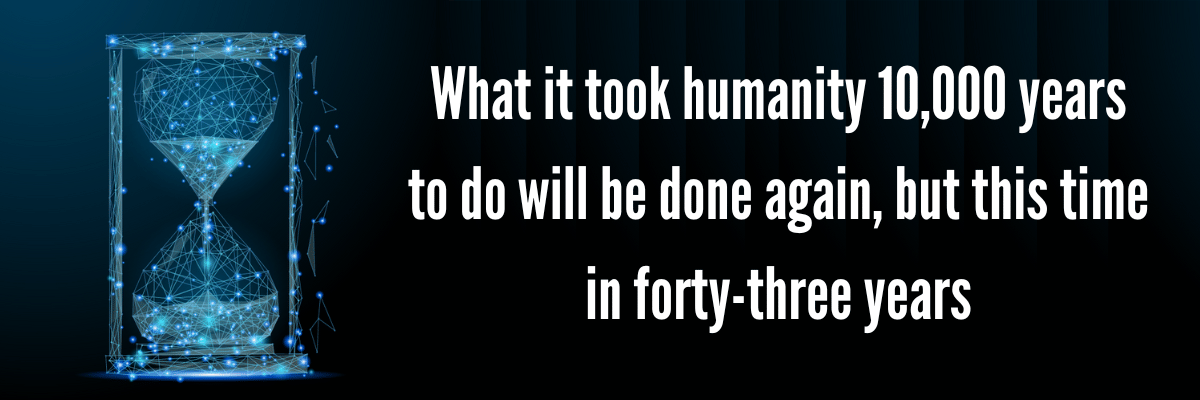
The Hurricane: Pandemics are the result of two mega trends
From small hunting and gathering tribes to towering cities, humanity’s reliance on one another has also sparked opportunities for disease to spread. Studies by the World Economic Forum show that the number of zoonotic viruses jumping from animals to humans has sped up at an alarming rate. Here is why.
By 2007 after 10,000 years of civilisation, fifty per cent of humanity or roughly 3.5 billion people had migrated from rural to urban areas. Incredibly this number will double in just over forty years. By 2050, seventy per cent of the world population or 7 billion people will be urbanised. So, what it took humanity 10,000 years to do will be done again, but this time in little over forty years.
Through the combination of rapid urbanisation and the destruction of the wildlife ecosystems, illegal trafficking of exotic animals and wet markets, humans have created the perfect breeding ground for novel viruses.
This degree of migration on steroids combined with environmental destruction means that the probability of future pandemic disruption is extremely high. Don’t be comforted by the idea that Covid-19 is a one-in-a-hundred years virus. The WHO predict up to three pandemics by the end of the 2020s. Pandemics are predictable and can and will come from anywhere.
Your strategies must be better prepared.
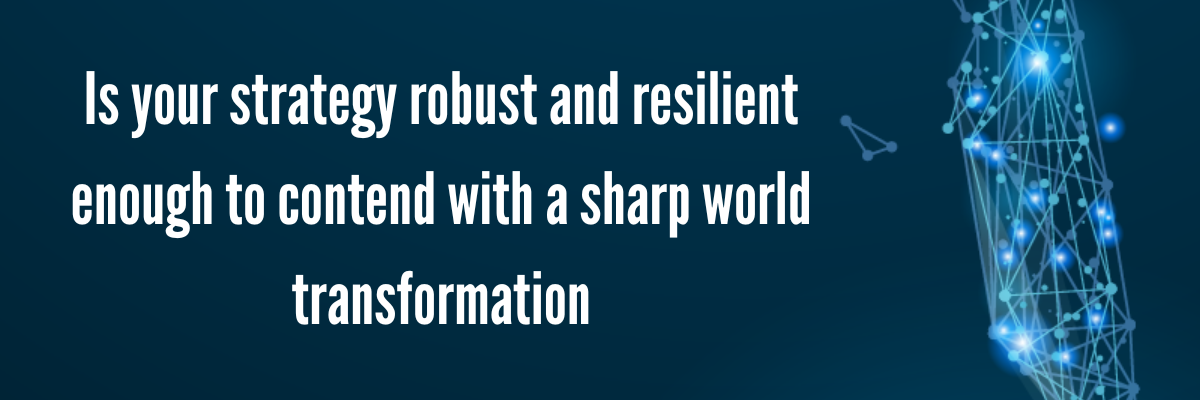
The Seven ‘Great’ Grey Elephants
In no particular order of threat or magnitude, the seven great grey elephants defining this new age of humanity include:
- Ageing
- Angry Planet
- Inequality
- Big Squeezes
- Angry People
- Multipolarity
- Intelligent Assistance
Combined these seven grey elephants will cause a sharp transformation. If you think the world has been changing fast, hold on to your seat.
Look back over history, there are moments when the forces of progress collide and afterwards a brave new world emerges. The Industrial Revolution, The Renaissance and The Age of Discovery all started with periods of social and technological upheaval that disrupted the landscape transmuting a new age forcing organisations to rethink how they operate in virtually every area. We have already entered the next societal shake up. Understanding the seven great grey elephants can help you be better prepared.
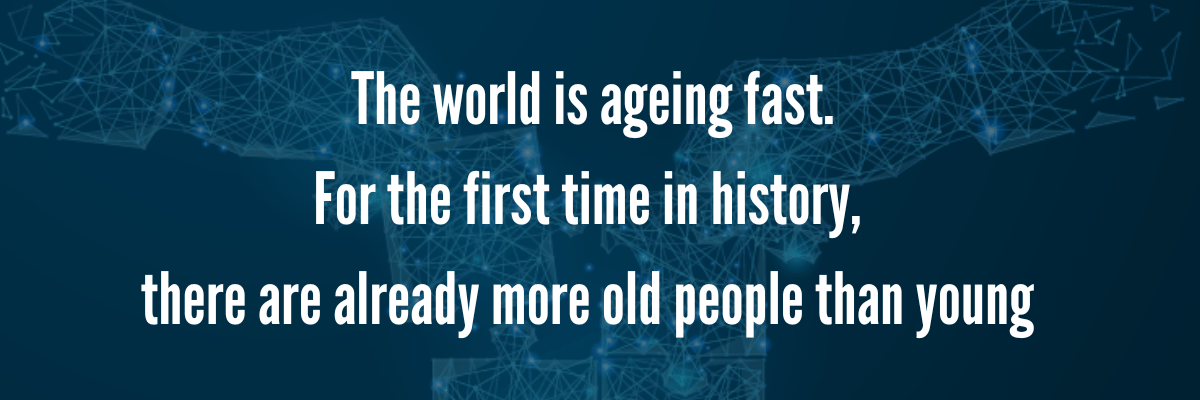
No 1: Ageing
The rapid increase in life expectancy poses intriguing questions about how individuals will utilise the additional time bestowed upon them. With the world experiencing a swift process of ageing, a significant shift is underway. Ageing is a tsunami of change, its impact will be massive and yet this is a neglected grey elephant. Very few companies and countries are facing up to the realities of ageing. The implications are vast, complex and not understood nearly well enough.
For the first time in history, the number of elderly individuals surpasses the count of young children. By 2030, older persons aged 60 and above are projected to outnumber children aged 0-9 years, with estimates reaching 1.4 billion and 1.3 billion, respectively. Moreover, this trend is expected to intensify by 2040, as the population over sixty is set to double from its present figures.
An example of this societal transformation can be seen in Japan, where sales of adult diapers have outstripped those of baby diapers. Furthermore, the number of centenarians is experiencing exponential growth, increasing by a staggering 400 percent each year.

The implications of the ageing phenomenon are far-reaching and yet often underestimated, with only a limited number of companies and countries adequately addressing its realities. Consider the economic ramifications of a dwindling workforce and consumer base comprised of younger individuals. The decline in the number of younger workers and consumers presents a fundamental challenge for businesses, raising concerns about who will purchase products and contribute to tax revenues.
Germany, for instance, is expected to witness a loss of approximately one-third of its workforce over the next decade. In this context, technology is poised to play a crucial role in augmenting the workforce as organisations struggle to find talent. Additionally, the allocation of resources toward healthcare expenses will impact disposable income, leaving individuals with limited financial flexibility.
Consequently, the traditional concept of retirement will be shattered, as individuals will need to continue working well into their seventies and eighties. Pensions, as currently understood, will become obsolete, leaving younger and older generations frustrated for distinct reasons—one grappling with shouldering the burden of funding retirement while the other faces broken pension promises.
Remarkable trends
- – Fertility is below replacement levels in most countries
- – Population growth is slowing dramatically
- – World population will peak at around 11 billion by 2100
- – The world is ageing rapidly, only Africa remains young
- – In Europe, nearly 1 in 3 people will be 60 or older by 2030
Potential Implications
- As life expectancy increases and fertility declines, a higher percentage of the population will consist of older individuals, which can strain social welfare systems and healthcare resources.
- A decline in fertility rates can lead to a shrinking labor force in the long term. As fewer individuals enter the working-age population, there may be a shortage of skilled workers and a reduced pool of talent for businesses and industries.
- Lower fertility rates can influence the overall structure and dynamics of society. Smaller family sizes may result in changes in family structures, with implications for intergenerational relationships, caregiving responsibilities, and the support systems available for older individuals.
Going Forward
Our research unveils the disruptive nature of the 2020s, a decade fraught with significant challenges. From the urgent need to combat accelerating climate change to the ongoing battle against various forms of inequality, these pressing issues are just two of the seven prominent grey elephants we have identified in this study. Compounded by the current hurricane-like pandemic, these converging forces create a perfect storm, intensifying and hastening the pace of change.
Fortunately, we possess an unprecedented array of technology and insights that can aid in problem identification and solution delivery. Remarkable opportunities await leaders who embrace a mindset attuned to change. What we need is the confidence to lead with courage, as the greatest risk of the 21st Century lies in our failure to think boldly enough to shape an exceptional century for all.
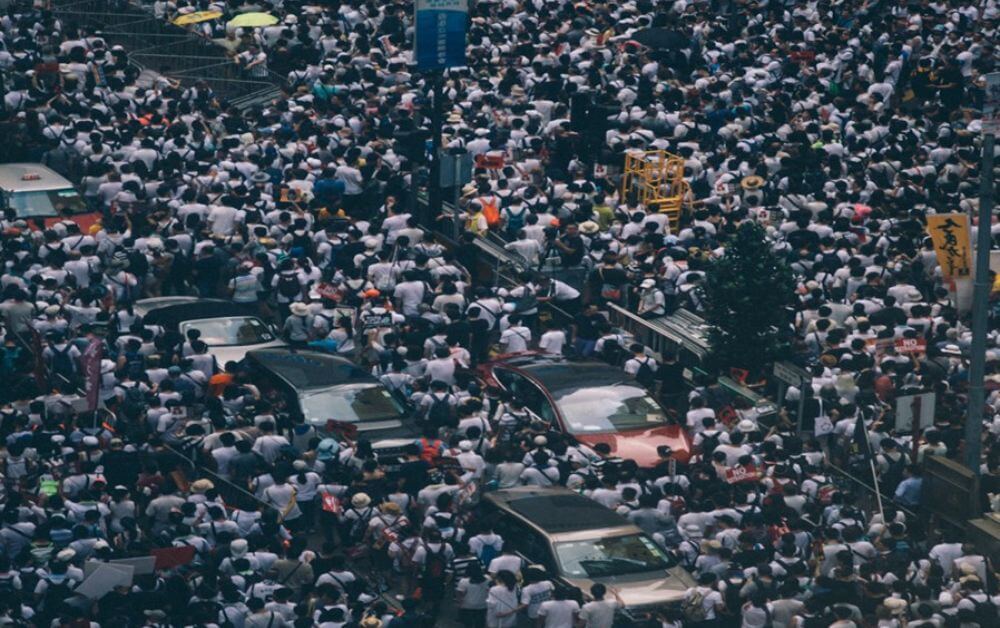
Grey Elephants are not new phenomena; they symbolise the world and the era in which we currently reside. During such times, businesses can find salvation through a culture of exploration, embracing bionic approaches, fostering robust ecosystems, promoting diversity and inclusion, and becoming agents of positive change. Our research demonstrates that companies that thrive amidst Grey Elephants reshape their business models to adapt and address the challenges they pose.
Addressing the challenges and opportunities associated with an ageing population is no exception and necessitates proactive measures and innovative approaches. By adopting forward-thinking strategies, societies can ensure the well-being and sustainable development of their populations, seizing the potential that lies within this demographic shift.
No 2: Angry Planet
The consequences of climate change, driven primarily by pollution and greenhouse gas emissions, pose significant threats to humanity and the planet. The late Wally Broecker, the iconoclastic guru of the climate debate, was fond of saying: “The earth is an angry beast, and we are poking it with sticks.” The beast has only just begun to snarl, humanity must stop poking or the beast will bite.
Front and centre is climate change. Studies show that it is the hottest it’s been in a billion years. In less than two decades, Greenland’s ice sheets have already shrunk at a rate of 269 gigatons a year. That’s the equivalent of melting 50 billion 7-ton grey elephants! And, yet there are still climate change doubters.
It is worth reflecting that “the climate emergency has no nationality, no race, no sexual preference and certainly no political or religious affiliation. The transition we are in will create completely new global tensions,” says Sasja Beslik. The BBC video series on Life at 50 Degrees is worth watching to get a broader perspective.
The impacts of climate change are already evident, and if urgent action is not taken, the consequences will become increasingly dire. Extreme temperatures, intensified storms, droughts, fires, hurricanes, coastal storms, and flooding will affect three-quarters of the global population if greenhouse gas emissions continue unabated. The resulting death toll could surge by more than 2,000 percent within this century.
The World Bank predicts that climate change will force a staggering quarter of a billion people to migrate by 2050 as the frequency and severity of these climate-related events escalate. The economic cost of inaction will be catastrophic, with severe disruptions to industries, infrastructure, and livelihoods worldwide.
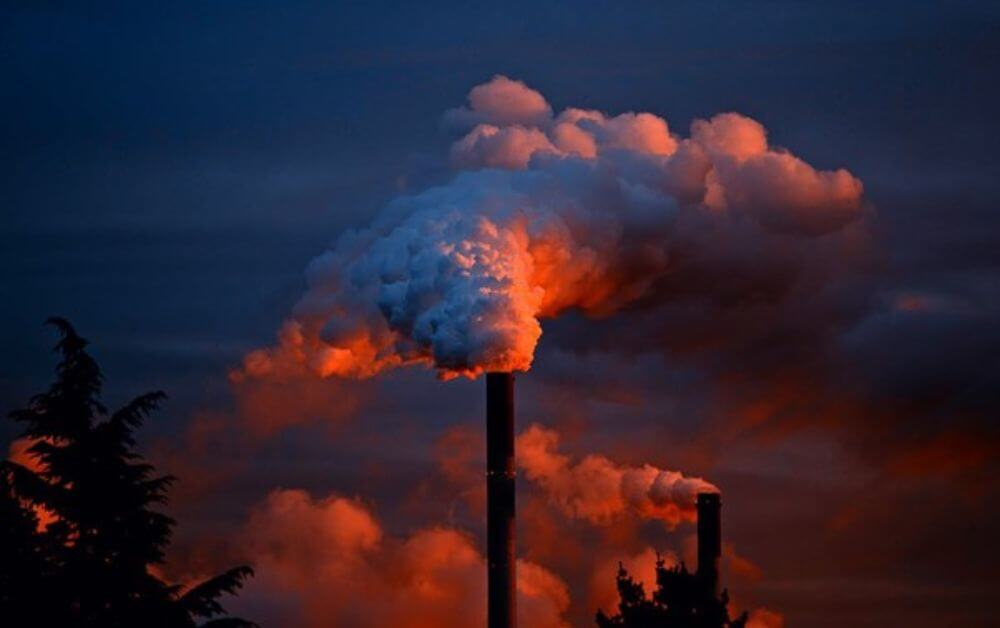
There is some hope in the rising recognition of the climate crisis, particularly within the investment community, as ESG funds have outperformed traditional investments by many measures and there is increasing attention to the importance of climate risk assessment and financial reporting.
However, meaningful action is still lacking. The transition to cleaner energy and greener products remains insufficient, and too few individuals and companies are investing in sustainable practices. The burning of fossil fuels, such as in vehicle emissions, natural gas flares, and forest fires, not only contributes to climate change but also has devastating health consequences.
We are still nowhere near reversing climate change, too few individuals and companies are investing in cleaner energy, greener products and supply chains.
Pollution is the real elephant in the room.
Another stick we are poking the beast with is the practice of flaring — the burning of natural gas that is released when oil is extracted from the ground, mainly from fracking. Flaring now produces more air pollution in two days than all the world’s motor vehicles expel in an entire year.
North Dakota is the global fracking capital, but because of a lack of gas pipelines to bring natural gas to market, oil companies flare as much as 2.5 billion cubic feet a day. This wasted gas could have powered the heating needs of 4.25 million homes for a year.
The practice of flaring is a major source of GHG. Although illegal in Nigeria, flaring continues to have a devastating impact. Fertile lands are being turned into deserts as flares raise temperatures to unbearable levels. One video, in the BBC’s series “Life at 50 Degrees”, tells the moving story of Joy and her family who are among two million Nigerians living within 4km of a gas flare in Nigeria’s oil-rich south.
It is worth watching, if only to understand the impact of flaring.
Vehicle emissions, natural gas flares and forest fires are not just damaging to the climate, they are literally killing people. In 2018 alone, pollution from burning fossil fuels resulted in over 7 million premature deaths, ranking it among the top killers globally. It is crucial to address the root causes of pollution and reduce reliance on fossil fuels to safeguard public health, mitigate climate change impacts, and create a sustainable future for all.
The urgency to act cannot be overstated.
Humanity must recognize the severity of climate change and its interconnectedness with pollution and greenhouse gas emissions. Bold and decisive measures are needed to transition to cleaner energy sources, enhance energy efficiency, promote sustainable practices, and embrace technologies that reduce pollution and mitigate climate change. By doing so, we can protect the planet, preserve human lives, and ensure a sustainable and prosperous future for generations to come.
Terrifying trends we’re seeing:
- The Earth’s average surface temperature has increased by approximately 1.1 degrees Celsius (2 degrees Fahrenheit) since the late 19th century, with the majority of this warming occurring in the past few decades.
- The frequency and intensity of extreme weather events, including heatwaves, droughts, hurricanes, and heavy rainfall events, have shown an upward trend, leaving behind devastating impacts on communities and ecosystems.
- As oceans become more acidic due to the increased CO2 levels in the air, Coral bleaching events, triggered by warmer ocean temperatures, have become more frequent and widespread, posing a threat to the biodiversity and productivity of these vital habitats.
- There’s been a global shift in species distribution as many species are moving to higher latitudes or elevations in search of suitable habitats as their original habitats become less hospitable.
These trends underscore the urgent need for concerted global action to mitigate greenhouse gas emissions, adapt to the changing climate, and protect vulnerable communities and ecosystems.
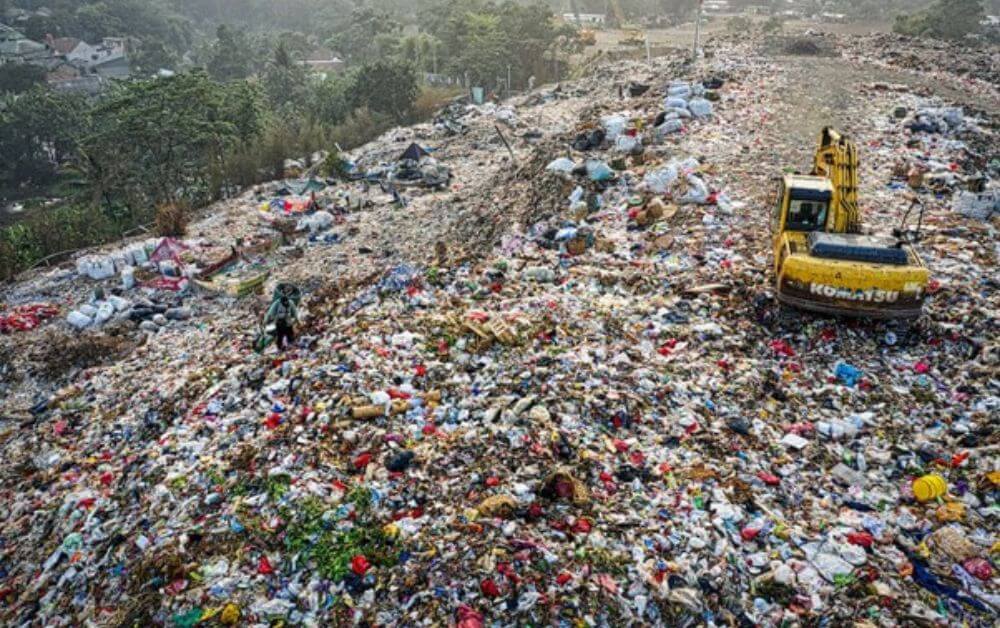
Our Climate Future…
Our research reveals that the 2020s are marked by a disruptive force, with one prominent grey elephant standing at the forefront: accelerating climate change. This global challenge, compounded by other pressing issues, demands immediate attention and innovative solutions. The convergence of these challenges creates a formidable storm that amplifies the urgency for change.
Fortunately, we now have access to advanced technology and insights that can aid in identifying and addressing climate-related problems. It is imperative for leaders to seize this opportunity, embracing a mindset that is tuned towards innovation and sustainability. We need courageous leaders who can navigate uncharted territories and make bold decisions to tackle climate change head-on.
To address this critical grey elephant, businesses and organisations must undergo a transformative shift. Embracing a culture of exploration and innovation will enable them to adapt and thrive in a rapidly changing world. They must adopt bionic approaches, leveraging technology and scientific advancements to create sustainable practices and mitigate environmental impacts. By strengthening ecosystem collaborations, businesses can pool resources, knowledge, and expertise to drive meaningful change. Moreover, fostering diversity and inclusion within their operations will bring fresh perspectives and ideas to the table.
The urgency to combat climate change calls for businesses and leaders to go beyond profitability and prioritise their role as forces for good. They must proactively engage in sustainable practices, reducing carbon footprints, promoting renewable energy, and adopting circular economy models. By doing so, they can create a positive impact on the environment while also securing long-term business viability.
Leadership in the face of climate change requires bold and visionary thinking. It is through innovative approaches and sustainability-driven decision-making that we can avoid a climate disaster. By embracing this responsibility, leaders can shape a future that not only addresses the challenges of climate change but also creates a more sustainable and resilient world for generations to come.
-
“The climate emergency has no nationality, no race, no sexual preference and certainly no political or religious affiliation. The transition we are in will create completely new global tensions” – Sasja Beslik
No 3: Inequality
Coronavirus highlighted the growing gap between the haves and have nots, one of the gravest Grey Elephants of our era. Over half of frontline care workers are paid less than a living wage, and studies show that low-paid workers are more likely to die from Covid-19 than higher earners: “Who cares about the workers’ health, while the rich run away,” says Domenico Marra who works at a factory in Milan. “But then poor people, who need to bring bread home, go out and take risks.”
Globalization and the pandemic crisis has been good for the elite few. The top three wealthiest individuals have as much wealth as the 160 million poorest people in the US. Globally, the richest two thousand people have more wealth than the poorest 4.6 billion and the 22 wealthiest men have more wealth than all the women in Africa.
In the UK, 90 per cent of workers have seen their incomes flatline for the past three decades. Whereas the elite or 0.01% of British citizens saw their incomes increase by 277% over the same period.
The fortunes of the world’s richest 500 people grew 25% in 2019. The combined wealth of these billionaires in 2019 was $8.7 trillion, which is equivalent to the total income of the poorest 150 countries.
Increasing inequality is widely associated with rising anger. All this helps explain why so many voters in the US and UK have grown frustrated with the ‘out of touch’ elites. The outcome, Trumpism and Brexit, both represent attempts to disrupt the status quo by voting in populist leaders promising to do precisely that.
Inequality is not a remote or abstract threat. It is a real and present danger. It must be reduced if we are to prioritize the well-being of people and our planet.

So what can we do?
Here are 5 ways that businesses and leaders can begin to address the real inequality present in our 2023 systems.
Embrace fair wages and benefits:
- Take the time to thoroughly review our employee compensation structures, ensuring that everyone is treated fairly and equally across all levels of our organization.
- Provide competitive benefits packages that go beyond the basics, such as healthcare, retirement plans, and paid leave, supporting the financial well-being of our employees.
- We could go beyond what is legally required and consider implementing a minimum wage that reflects our commitment to fair compensation.
Foster diversity, equity, and inclusion (DEI):
- Establish initiatives that prioritize diversity and inclusion, creating a workplace where everyone has an equal opportunity to thrive, including at senior leadership levels. As well as creating a workplace that supports psychological safety and embraces difference, understanding that when co-workers feel valued and safe, they are more open to sharing their ideas, improving their productivity and overall bringing more to our organizations.
- Raise awareness of implicit biases by implementing unconscious bias training programs, cultivating a more inclusive and understanding company culture.
- Actively seek out diverse talent through inclusive recruitment and hiring practices, making sure to reach out to underrepresented communities.
Invest in upskilling and education:
- Develop training and upskilling programs to empower our existing workforce, helping them adapt to changing job requirements and pursue their career growth.
- Partner with educational institutions and nonprofit organizations to provide educational opportunities and scholarships for individuals facing disadvantages, promoting social mobility and closing the skills gap.
- Remember that leaders and senior team members can and should be encouraging learning amongst themselves too.
Prioritize responsible supply chain practices:
- Regularly audit and assess our supply chain partners, ensuring fair labor practices, including fair wages and safe working conditions for all workers involved.
- Show support for suppliers who demonstrate a commitment to ethical business practices and fair treatment of their employees.
- Consider initiatives like local sourcing and supplier diversity to contribute to local economies and promote a more equitable distribution of economic opportunities.
Engage in philanthropy and community investment:
- Dedicate a portion of our profits or resources to philanthropic initiatives that tackle systemic inequality, such as funding educational programs, improving healthcare access, and supporting affordable housing initiatives in underserved communities.
- Collaborate with local community organizations and NGOs to identify opportunities for meaningful partnerships and investments that foster economic empowerment and social inclusion.
Let’s not despair at the state of the current system’s inequality, but rather find practical and hopeful solutions that can change things, even in the ways that might seem small in those moments. Their long-lasting implications have the power to break the structures. Remember, addressing income inequality is a journey that requires a multi-faceted approach. By taking these actions, we are taking the first steps toward positive change.
Remarkable trends
-
– The Industrial Revolution has pulled billions of people out of extreme poverty — living on less than $2 per day
– At the start of the Industrial Revolution 89 per cent of the world’s population lived in extreme poverty. Today that figure is at under 10 percent. But that is still over a billion people
– For the first time since the start of the Industrial Revolution, younger generations on average can expect to be less well off than their parents
– Africa is expected to account for nine out of ten of the poorest people in 2030
– Inequality between the haves and have nots is growing
It’s important to remember that leaders and businesses can make an impact and affect meaningful change to counteract the structures of inequality currently at play. But it must go beyond a simple appearance of diversity and inclusion. It must go beyond performative acts and fundamentally shift the ways in which we embrace difference and break down structures that have historically, and still to this day, structurally oppress various groups of people.
The future is coming, and we can make it better. So assess your business, your teams, your internal and external biases. And reflect on the ways in which you might begin to break down inequality and work towards a more sustainable, equitable future for all. Every one of us has the potential to make a difference. Let’s continue evaluating and improving our practices, remaining committed to creating a fairer and more equitable future for all.
No 4: The Big Squeeze
In an era marked by uncertainty and rapid change, the concept of the Grey Elephant framework provides valuable insights into highly probable, high impact, yet often overlooked threats. The “Big Squeeze” refers to a collection of interconnected challenges that pose a systemic and complex burden on various aspects of our lives. It represents the convergence of multiple factors that amplify the pressures on individuals, communities, and global systems. From supply chain disruptions and labor shortages to rising costs of living and stagnant wages, the Big Squeeze creates a multifaceted squeeze on our daily lives, leaving many feeling the pinch.
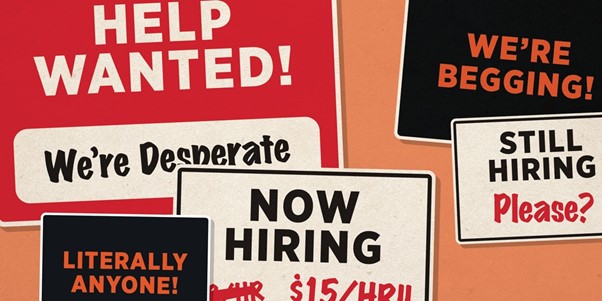
While it’s important to acknowledge the complexity and systemic nature of these issues, it’s equally vital to approach the future with awareness, adaptability, and a proactive mindset. By understanding and preparing for the Big Squeeze, we can better navigate its impact and identify opportunities for growth and resilience.
In this article, we delve into three critical areas affected by the Big Squeeze: the food supply squeeze, the fresh water squeeze, and the energy squeeze. We’ll explore the challenges within these domains, highlight remarkable trends that demand our attention, and discuss potential approaches to tackle these pressing issues.
By shedding light on the Big Squeeze and its far-reaching implications, we can collectively develop strategies to address these challenges and forge a path forward that leads to a more sustainable and resilient future.
The Food Supply Squeeze:
The global food system faces multifaceted challenges, including an overabundance of unhealthy food and significant food wastage. High fat, sugar, and salt (HFSS) diets contribute to a rising tide of obesity, which has tripled worldwide since 1975. Alarmingly, more people now die from overeating than from starvation. Moreover, the industrialized production of certain foods like palm oil, soybeans, and beef has led to the extinction of countless wild species. The food supply squeeze demands urgent action to ensure sustainability, reduce food loss, and transition toward healthier, environmentally friendly practices.

The Fresh Water Squeeze:
Melting Himalayan glaciers pose a looming threat with far-reaching consequences. As global warming accelerates, these glaciers are disappearing at an alarming rate, jeopardizing the water supply for 40% of the world’s population and impacting 20% of the global economy. The ripple effects will be felt gradually, first causing floods and then leading to water scarcity, crop failures, and power shortages. Vulnerable regions like Bangladesh, Nepal, and parts of Africa and the Americas will bear the brunt of this crisis. Potential water wars and social unrest underscore the urgent need for collaborative solutions to manage freshwater resources sustainably.
The Energy Squeeze:
Record-breaking prices and supply disruptions in gas, coal, carbon, and electricity highlight the energy squeeze. Soaring oil and natural gas prices, coupled with a prolonged energy crisis, have significant implications for global economies. As consumers face higher energy bills and escalating costs of living, the risk of social discontent grows. It is crucial to address the energy squeeze by accelerating the transition to renewable energy sources, promoting energy efficiency, and diversifying energy supply chains.
Moving Forward:
While the Big Squeeze presents formidable challenges, it also offers an opportunity to reassess and transform our systems. By embracing innovation, collaboration, and sustainable practices, we can navigate these pressures effectively. To address the food supply squeeze, we must prioritize sustainable agriculture, reduce food waste, and promote healthier diets. Mitigating the fresh water squeeze requires collective action to preserve freshwater resources, invest in efficient water management, and foster international cooperation. Finally, the energy squeeze necessitates solutions in energy efficiency, an accelerated shift to renewable energy, energy conservation, and diversified energy portfolios.
The Big Squeeze represents a formidable challenge that demands our attention and collective action. As we face the cost of living crisis resulting from food shortages, soaring energy costs, and fresh water problems, it is imperative to explore potential solutions and make concerted efforts to mitigate the impact on individuals and communities. While the task at hand may seem daunting, there are soft suggestions we can consider to address these pressing issues and curb the cost of living crisis.
- Embrace Sustainable Consumption: Promoting sustainable consumption habits can alleviate pressure on the food supply and reduce waste. By making informed choices about the types of food we consume and supporting local, sustainable agriculture, we can create a more resilient and equitable food system. Additionally, reducing food waste at individual and societal levels can conserve resources and lower costs.
- Foster Energy Efficiency: Energy efficiency initiatives can help alleviate the burden of rising energy costs. Encouraging energy-saving practices at home and in businesses, investing in renewable energy sources, and supporting technological advancements can lead to a more sustainable and affordable energy future. Governments and organizations can incentivize energy-efficient measures through policies and programs.
- Invest in Water Management: To address the fresh water squeeze, investing in effective water management practices is crucial. This includes implementing conservation strategies, supporting water recycling and reuse initiatives, and prioritising investments in infrastructure for water storage and distribution. International cooperation and sharing best practices can also contribute to the sustainable management of this critical resource.
- Foster Financial Support and Resilience: To alleviate the burden of the cost of living crisis, governments and organizations can provide financial support to individuals and families facing hardships. This can include targeted assistance for vulnerable populations, affordable housing initiatives, and programs that enhance financial literacy and resilience. Creating opportunities for upskilling and retraining can empower individuals to adapt to changing economic conditions.
- Foster Collaborative Solutions: Addressing the Big Squeeze requires collaborative efforts across sectors and stakeholders. Governments, businesses, communities, and individuals must come together to develop innovative solutions, share knowledge and resources, and prioritise sustainability in decision-making processes. By fostering collaboration, we can tap into collective wisdom and generate transformative ideas that lead to long-term solutions.






